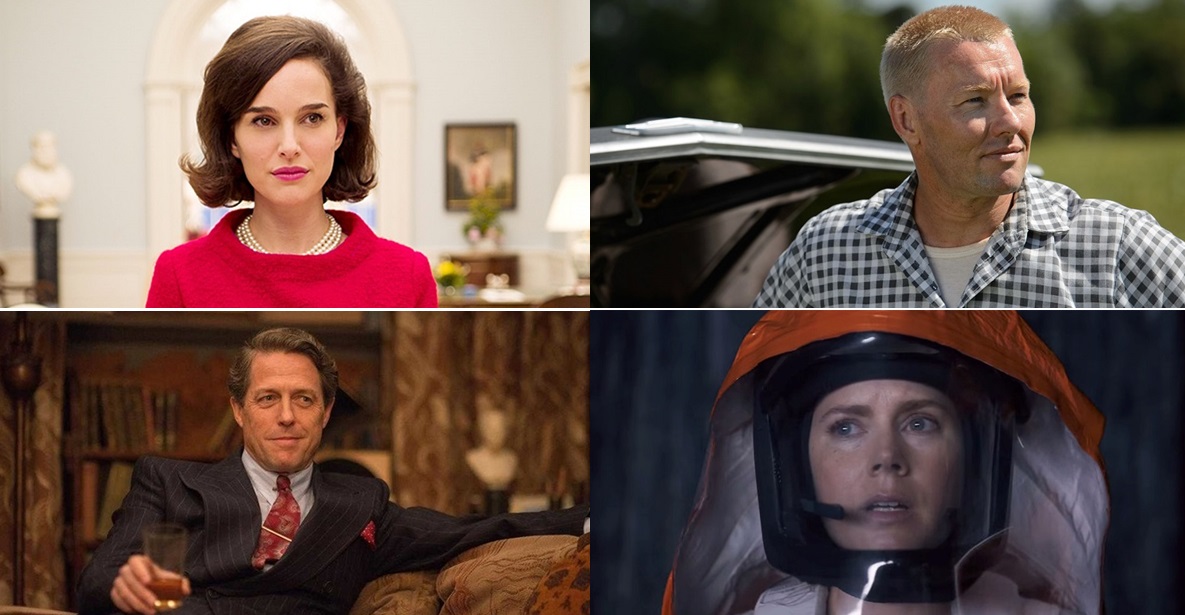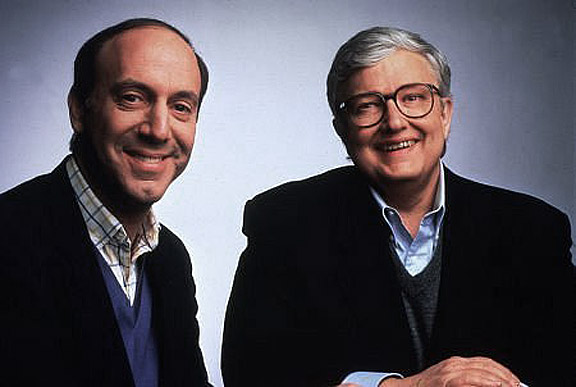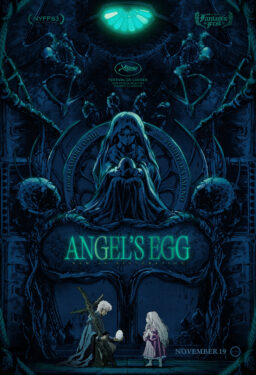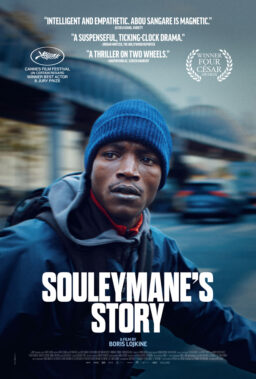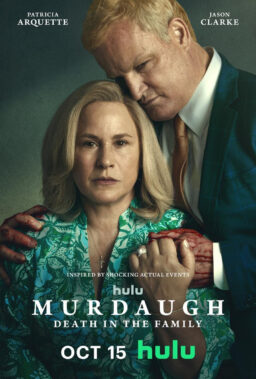As we do every year, the staff of RogerEbert.com has picked some of our favorite performances of 2016. To be clear, these are some, not all of our favorite performances. It’s mere coincidence that we ended up not writing about the great ensembles of “La La Land,” “Manchester by the Sea” and “Nocturnal Animals.” And we decided editorially to stick to one performance per film, so don’t take the absence of people like Mahershala Ali and Ruth Negga to mean we think any less of their work this year. We do think this feature displays the range and depth of the craft in 2016, and we purposefully tried to pick turns from diverse genres and from some films that aren’t getting the attention they deserve. Enjoy.
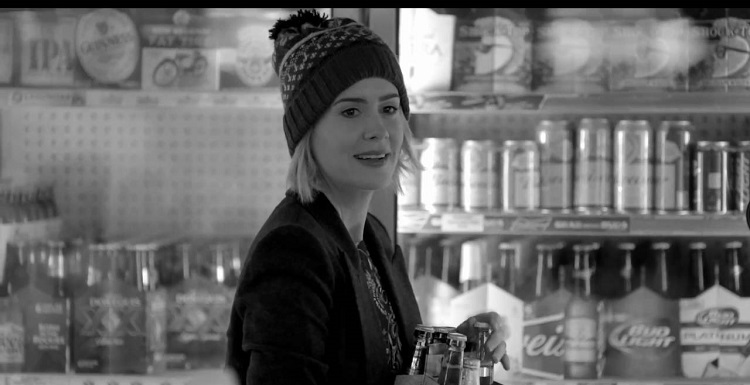
Sarah Paulson as Amanda in “Blue Jay” by Noah Gittell
When I think of Sarah Paulson’s performance in “Blue Jay,” I remember the stars in her eyes. As the romantic comedy has faded into obscurity amidst charges of regressive sexual politics, we have lost something important along with it: onscreen romance. In all genres, romances feel perfunctory these days. There is no room for romance in animated movies, at least not since “Wall-E.” Superheroes flirt, but they don’t fall in love, and their love interests (say, Pepper Potts) can be jettisoned with a throwaway line.
“Blue Jay” is a concise indie romance about two high school sweethearts (Paulson and Mark Duplass) who bump into each other twenty years down the road and spend a night reminiscing, playing house, and generally remembering what it was like to be truly in love. The way Paulson gazes at Duplass reminds us what we’ve been missing. Watching two people fall for each other is how movie stars were once born, and Paulson, for all of her recent accomplishments, has rarely been allowed to be so happy and free. As the two characters lose themselves in the past, Paulson gets to play a sex kitten, hip-hop dancer, and improvise a rap about ice cream. It’s a thrilling movie-star performance in a movie that almost no one saw. That’s worth thinking about—and it’s absolutely worth watching.

Kate Beckinsale as Lady Susan Vernon in “Love & Friendship” by Niles Schwartz
In playing the widow Lady Susan Vernon, Kate Beckinsale was given the challenge of pulling off a performance about performing, to seamlessly affect the polished poise and language in a society comically strangled by the manners of hierarchal absurdities. “Love & Friendship” opens with its credits dancing in perfect step with a harp, the curtly bowing texts a prelude to how Beckinsale will elegantly manifest Lady Susan’s coquetry, acting an 18th century English Medea ruthlessly assuring her fortune, satisfy her desires, and marry off her daughter. “Facts are horrid things,” and Susan’s an unexpected avatar for post-truth times, but evil is rarely so irresistible and witty. Beckinsale’s flawless countenance and velvet tongue obscure Lady Susan’s tainted reputation and baffle her accusers; her sprezzatura is not only several steps ahead of her adversaries, friends, and lovers (three categories that humorously overlap here), but of the audience, who likewise bows to her in deference. Whit Stillman, one of our great architects of manners, gives his film a motif of deciphering text, from the Old Testament to a letter’s punctuation, but only Lady Susan, the actor’s actor, coasts gracefully above the contours of discourse, mastering its syntax and so inhabiting every space of the film, weaving herself into every frame, even when off-screen. Beckinsale’s concord with Stillman’s frame is a wily manifestation of Wildean irony and wit, perfection that would be ostentatious to mark with vulgar awards.

Trevante Rhodes as Black in “Moonlight” by Sheila O’Malley
What does it do to a person to live without love? Affection? Touch (sexual or otherwise)? Living deprived of human contact can turn a person into a Travis Bickle. Or it can turn a person into Little/Chiron/Black, the central character in Barry Jenkins‘ triptych-formatted “Moonlight.” Black is the final iteration of the lead character, a muscle-bound repressed drug dealer with a mouth full of silver, played by Trevante Rhodes. Rhodes connects the character up with the child and the teenager shown earlier: you believe totally that he is the end result of their shared experiences.
Black is a man with an enormous capacity for intimacy that has never been expressed. Despite his rough life, that capacity has not been killed. As an actor, in every single moment Rhodes allows his vulnerability to exist, surging up, flooding his eyes. This is a man who has shoved everything seemingly “soft” about himself into a basement, locked the door, and thrown away the key. His face, though, still shows that fragile frightened boy hiding in the abandoned apartment in the opening scene of the film. When Black smiles, it’s so unexpected the film shatters.
Rhodes’ behavior with his childhood friend, his only friend, played by Andre Holland, is shy. Almost sweet. As an actor he knows intuitively that any given moment is never just one thing: love can create sadness, sexual feelings exist alongside loss, awkward silence can come close to grace. Rhodes never plays just one thing at a time (a trap that many actors fall into). Black’s emotional life is a whirlpool. Rhodes doesn’t “act” this. He understands it. When the rock of his impressive exterior cracks as he faces off with his mother, his tears are like scalding lava. He is so unused to weeping that he can barely be with the experience. When he throws a smile at Kevin, the joy in his face is so intense you almost get afraid for him. It becomes urgent that no one hurt this man ever again.
What is so astonishing in Rhodes’ performance is that the exterior tells one story and the interior wages war against the front. Society tells us to toughen up. We are shamed for being “weak,” for “whining”, for struggling. It’s worse for boys. Girls at least are allowed to have emotions. Boys are told boys don’t cry, grow some balls, “man up.” The message is clear and as damaging as it gets: vulnerability and masculinity cannot be allowed to co-exist. Carefully, sensitively, Rhodes unpacks all of that and shows the peril of Black’s emotional life.
Barry Jenkins knew the story he wanted to tell. But he needed an actor who could do it, and really do it. Marlon Brando said that actors should “avoid theory and embrace experience.” Rhodes’ performance is not a “theory.” It is the definition of an experience, for him and for us.
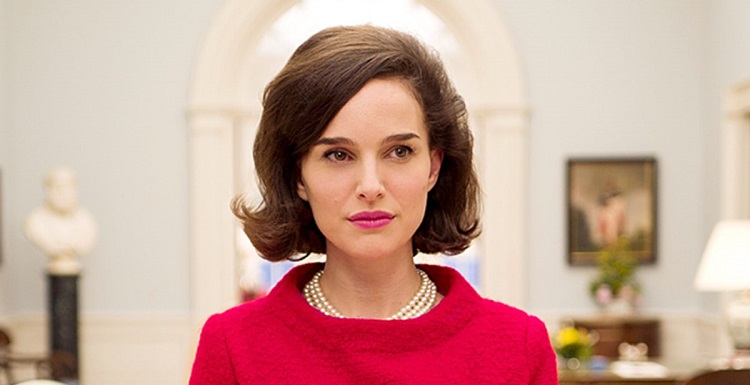
Natalie Portman as Jackie Kennedy in “Jackie” by Angelica Jade Bastién
Watching Natalie Portman in “Jackie” is akin to the sensation of looking at a rubber band pulled taut. You’re all nerves waiting for it to snap. As First Lady Jacqueline Lee Kennedy trying to make sense in the wake of John F. Kennedy’s assassination, Portman could have tripped into caricature. Instead “Jackie” marks the first time this icon has seemed like a flesh-and-blood woman on-screen.
Portman plays Jackie with a host of contradictions—high camp bitchiness and all-too-human yearning; fragility and steely strength. With her skill, the iconography we’ve come to associate Jackie with, like the prim pink Chanel suit stained in her husband’s blood, looks lived in, present. In scenes in which she shows her unvarnished self to Billy Crudup’s journalist there is an urgency and painfully relatable rendition of loneliness that makes a character who has been refracted through pop culture countless times seem new. Jackie isn’t a sealed-off emblem from the past. Here, she’s a complex, lonely, challenging, and cunning creature.
But what’s most powerful to me about Portman’s performance is that she doesn’t play Jackie as a simple madwoman unraveling before our eyes. Instead she’s a woman stitching herself together. It’s a technical marvel reflecting the research that it takes to pull off someone as well-known as Jackie, which we hear whenever she speaks in that odd, lilting voice. But Portman also puts Jackie’s shifting emotional landscape up front, turning from righteous fury to depression at a clip so it becomes more than just about technical prowess. In the film’s best scene, we watch Jackie try on a variety of beautiful gowns while drinking vodka and smoking furiously. This moment crystallizes the greatness of Portman’s performance—it explores in brutal ways the nature of female identity and the ways we’re reshaped by tragedy.

Adam Driver as Paterson in “Paterson” by Brian Tallerico
The comedic or dramatic straight man has always been underrated. People love the attention-getters, the comedians who get the punchlines instead of those who set it up. While “Paterson” is far from a traditional comedy, Adam Driver’s work in it comes from the legacy of the straight man. He allows the people around him to draw attention, whether it’s his joyful girlfriend Laura (Golshifteh Farahani), the people at the bar he visits every day, passengers on his bus, or even the scene-stealing dog Marvin. And yet this performance feels anything but passive. Driver makes so many minor decisions that end up being the anchors for the entire film. While we continue to admire acting turns that are deeply external (think Leonardo DiCaprio in “The Revenant”), performances like this that are so much about listening and thinking often don’t get the attention they deserve. Jim Jarmusch’s masterpiece is a film about finding poetry in the world, and it’s through Driver’s eyes that we’re allowed to experience the ebbs and flows of that poetic world. Every small choice—I particularly love the way he responds to a young girl’s poem that he knows is phenomenal—feels not just genuine and realistic, but poetic. He elevates the mundanity of a story without “big scenes” or “flashy moments” to deliver one of those rare performances that can truly be called transcendent.

Samantha Robinson as Elaine in “The Love Witch” by Danny Bowes
Anna Biller’s “The Love Witch” is one of the best films of 2016, a genre deconstruction with a note-perfect sense of its genre, and a clear and urgent purpose to its deconstruction. Its design, cinematography, score, and editing rhythms all perfectly call to mind ’60s and ’70s Euro erotic horror classics, but the keystone holding the entire structure in place is the lead performance by Samantha Robinson. That she physically resembles a hybrid of Edwige Fenech and Catherine Deneuve is down to casting and hair and makeup design (all of which are immaculate). But her performance is a masterclass in presentational acting, a performance holistically unified with its surrounding text, one that simultaneously is exactly what the movie needs to work, and one that defines the movie in its own image. It’s stellar work, and hopefully a sign of much more great work to come from relative newcomer Robinson.

Alden Ehrenreich as Hobie Doyle in “Hail, Caesar!” by Sean Mulvhill
“Would that it were so simple.”
With those six words the Coen brothers turned Alden Ehrenreich from a relatively unknown actor to the next big thing with his role in “Hail, Caesar!” as the delightfully dimwitted Hobie Doyle. In the funniest scene of the year, Ehrenreich holds his own opposite Ralph Fiennes as Hobie Doyle must shed the chaps and holster of his cowboy movies in favor of a tuxedo for Laurence Laurentz’s “Merrily We Dance.” Ehrenreich adopts an exaggerated Southern inflection in the role and struggles mightily and comically to properly pronounce the six-word line. Yet it’s not simply Ehrenreich’s drawl that makes the scene so funny. Before he utters a single word or that mirthless chuckle, the young actor is able to convey Hobie’s apprehension as he adopts an awkward gait across the lush set of the prestige picture. He walks as if the tuxedo is made of sheet metal, awkward and stiff. It’s a subtle physicality that operates as a setup to the oft-repeated punchline.
The brilliance of Ehrenreich’s performance isn’t simply limited to one eminently rewatchable scene. As Hobie waits to escort the Carmen Miranda stand-in Carlotta Valdez to the premiere of his latest film, Ehrenreich displays a prowess with the lasso, dancing in and out of the rope as he kills time. Later during their studio arranged date, Ehrenreich continues to display his talents with the lost art or wrangling by using pasta to create a food-based lasso in order to impress his date. Ehrenreich displays a commitment to his role that extends far beyond his accent and the endearing way he pronounces “extrie.” It’s not so simple, you see? Not so simple.
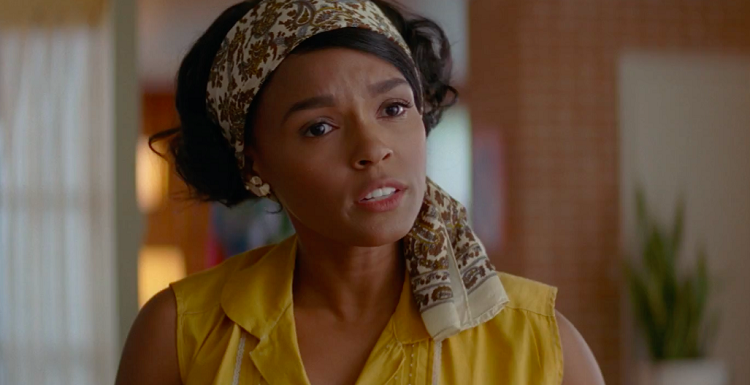
Janelle Monae as Mary Jackson in “Hidden Figures” by Craig Lindsey
This year, recording artist Janelle Monae really made a big splash on the big screen. First, she gave an understated performance as the loving girlfriend of Mahershala Ali’s fatherly drug dealer in “Moonlight.” But she kicked it up a notch in “Hidden Figures,” playing alongside Taraji P. Henson and Octavia Spencer as three real-life, African-American mathematicians who worked at NASA during the Space Race.
Monae is all tart-tongued scrappiness as Mary Jackson, who takes on the damn-near-impossible mission of becoming NASA’s first female, African-American engineer. Jackson knows she’s gonna get opposition at every corner, whether it’s from uppity white folk who can’t fathom such a thing or her own husband, always there to remind her that these crackers don’t play fair. But Jackson always keeps her head held high, coming with both the confidence and intelligence that immediately lets people know she’s not playing around.
Monae is a spunky, sophisticated delight, injecting both a savvy cool and a stiff-upper-lip dedication in her performance. Watching her drop some knowledge on a judge, in order for her to attend classes at an all-white school, is one of the more pleasurable movie scenes I’ve seen all year. While it appears that 20th Century Fox is lobbying to get Octavia Spencer, who already got a Best Supporting Actress Oscar for “The Help,” another Oscar nod for her performance, people should definitely not forget the sass and spark Monae brings to her role. To borrow one of her album titles, she truly is an electric lady.

Hugh Grant as St. Clair Bayfield in “Florence Foster Jenkins” by Odie Henderson
The showiest role in “Florence Foster Jenkins” belongs to Meryl Streep, who applies her technical mastery of mimicry to a character whose dreadful singing would blow the fur off a hundred alley cats. But the best performance in director Stephen Frears’ noble failure of a biopic belongs to Hugh Grant. As the awesomely named St. Clair Bayfield, Grant plays a juicy, complex iteration of the lovable cad character we’ve come to associate with him. Like his surname namesake, Cary Grant, Hugh makes the performance seem effortless, a mere extension of the real-life persona the actor has crafted for himself. Because of this, the revelatory yet subtle acting nuances by both Grants quite often went unrewarded; theirs are the kinds of roles that win hearts but lose awards.
As Bayfield, Grant has a bit more tightrope to walk than usual. His actions at times lead perilously close to mild villainy, yet Grant embraces these discordant notes and plays them expertly. For example, Jenkins is paying not only for Bayfield’s companionship but also for the house where, unbeknownst to her, this gigolo is shacking up with another woman. But Bayfield’s a failed actor whose bruised ego stands in awe of the wealthy Jenkins’ ability to pay for her operatic dreams to come true. That admiration grows into a protective love for his companion’s delusions, a love Grant depicts with an excellent comic fierceness. It’s as if he’s “Sunset Blvd.”’s Joe Gillis and Max rolled up into one person.

Tika Sumpter as Michelle Robinson in “Southside with You” by Nick Allen
While constructing her performance as Michelle Robinson on her first date with future-president Barack Obama in Richard Tanne’s “Southside with You,” actress Tika Sumpter had what I imagine to be one of the most daunting tasks for any actor. Fulfill a character that can sufficiently walk and talk, and give her a sense of agency—but don’t lean too hard on the awe of this human being, who happens to be one of the most important Americans who ever lived. You’re playing someone with a warmth and stoicism that has defined her, but your interpretation needs to stand out. Sumpter manages this acting task with grade-A delicacy, elevating the premise past novelty to become a flesh and blood portrayal of an icon.
Were “Southside with You” an easygoing romantic comedy about any burgeoning Chicago couple, Sumpter’s performance would still boast spectacular charm. You root for her from the very beginning as a hard-working young woman going out with a smooth-talking guy from work, and understand why she insists to him for so long that it’s not a date. Along with other reasons, it looks different for her than for him if she were to date a co-worker, especially as she has to work double-time to be respected as a woman of color in a mostly white and male workplace. With the austerity and poignancy of Sumpter’s performance, “Southside with You” recognizes that our modern goals for equality should concern gender as much as race; the narrative is about a man empathizing deeply that, just as much as it is a historic first date. Sumpter’s take on Michelle Robinson is an unforgettable expression, one that’s characteristic of “Southside with You’s” natural splendor.

Susan Sarandon as Marnie in “The Meddler” by Matt Zoller Seitz
Written and directed by Lorene Scafaria, and partly based on her own relationship with her mother, “The Meddler” is the kind of movie that needs its lead performance not just to work but to draw you in and hold the movie together. Susan Sarandon is used to this kind of thing, and delivers a career-capping performance that’s as fascinating as her ferociously contained dramatic work in “Thelma and Louise” and “Dead Man Walking,” but far less likely to be praised because, despite its darker passages, “The Meddler” is essentially a light and hopeful film. Sarandon’s heroine, Marnie Minervini, is a widower who lost her husband two years earlier but is still so lost in a fog that she thinks it’s only been one. She’s not a dour character, though. She’s upbeat and engaged—too engaged in some ways, as the film’s title indicates; she can’t stop offering, at times passive-aggressively demanding to help others, always with sunshine in her voice and a hint of a grin on her face, pouring her trauma into quests to make other people’s lives better. Sarandon’s Bette Davis eyes and Cheshire Cat smile have rarely been put to more effective use, and she makes the character seem lived-in and specific. At the same time, though, there’s an emotional transparency to the performance that’s remarkable: you believe that Marnie’s grief would be hidden from others, and in some ways from Marnie herself, even as you see it right there in front of you. And there are several tour-de-force moments of wordless gesture thrown in, just to give you a sense of what an inventive performer Sarandon is. The peak might be the sequence where Marnie gets high (something she never does) and wanders around a shopping district, stuffing food into her mouth while listening to some of her late husband Joe’s favorite music, and at one point “conducting” the water jets of a fountain.

Gabriel Byrne as Gene in “Louder Than Bombs” by Scout Tafoya
As when Jonathan Pryce was finally given a spectacularly splashy part in “Listen Up, Philip” after years of playing undemanding, if fun character parts, Gabriel Byrne so plainly relished the opportunity to play a flesh and blood human being in “Louder than Bombs” that he turned in his finest performance in decades. As a bereaved husband dealing with not just his own titanic grief, but also that of his children, he’s electrifyingly ordinary. He knows that to some extent he’s to blame for his wife’s suicide and the poor emotional fortune of his family, but his guilt is met equally fiercely by relief that his life can now take a new turn not hampered by his wife’s ambition or his jealousy at the life she led separate from him. Byrne does all this without seeming monstrous or even really pitiable. He’s just a man. He’s made mistakes but he’s trying to make sense of the world and Byrne’s eyes and voice, heavy with loss of sleep and the attempted forging of a new identity after the trauma that rocked his whole existence, tell us everything we need to know about what he’s dealing with on the inside. Joachim Trier’s fine film thankfully unfurls this roadmap of resentment and fear even further, but Byrne’s performance could have been the whole show. It’s remarkable work from a legendary actor.

Blake Lively as Nancy in “The Shallows” by Peter Sobczynski
On paper, the premise of “The Shallows”—a surfer is trapped on a small rock by a hungry shark and has only a few hours to figure out a way to make it to the shore a mere 200 yards away before the high tide puts her back into the water—makes it sound like the kind of B-movie cheesefest destined to become a staple on the SyFy channel programming schedule. Instead, it turned out to be one of the year’s happiest surprises and one of the few summer movies that wasn’t a complete letdown. One might not readily expect a film involving a giant CGI shark to work but the one-time “Gossip Girl” star is the key. While she might have been cast at least in part because of the way she looks in the bikini/wetsuit combo that constitutes her wardrobe, the performance that she gives is so focused and compelling—all the more so when you consider that she is alone for virtually the entire running time—that she single-handedly takes a project that could have been utterly absurd and makes it work better than anyone could have possibly imagined. Lively’s work here deserves to celebrated as not just one of the most underrated turns of 2016 but one of the very best.
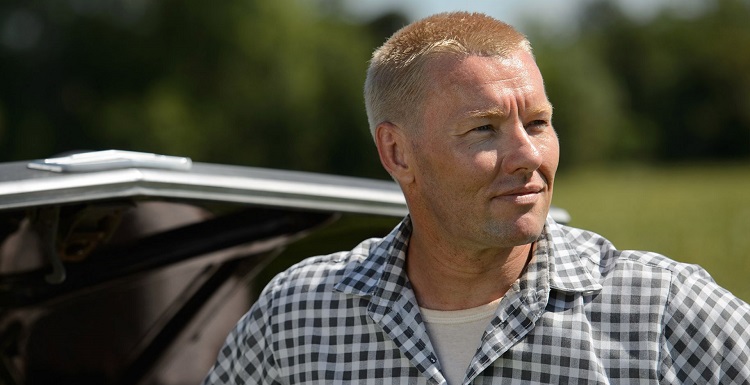
Joel Edgerton as Richard Loving in “Loving” by Alan Zilberman
Richard Loving was a simple man. He loved his racecar, his rural home, his children, and his wife. It was incidental to him that his wife happened to be black. The state of Virginia felt differently about his marriage, and “Loving” is about the protracted legal battle that ultimately upheld the union between Richard Loving and his wife, Mildred.
In the hands of a lesser filmmaker and lead actor, “Loving” could have been in a mawkish melodrama. Jeff Nichols and Joel Edgerton, who previously collaborated on “Midnight Special,” turn the story of the Lovings into a hymn of soft-spoken decency. As Richard, Edgerton is a little elusive, even mumbling some of his dialogue. It is a strange performance, but a necessary one since Richard kept his feelings to himself (or Mildred). By the time Nick Kroll enters the film as an ACLU lawyer, we see Edgerton’s ultimate purpose. Kroll is a comic actor, one who mugs for the camera, and his character’s naked ambition is anathema to Richard’s nature. He sees no pomp and circumstance in the Supreme Court; in fact, the idea that Richard must defend his marriage before a judge fills him with anger and pity. Toward the end of “Loving,” Edgerton’s elusive performance seamlessly transitions into deep reserves of feeling. Almost wordlessly, he conveys an important truth that all married people internalize: that no one will ever fully understand their marriage.

Amy Adams as Louise Banks in “Arrival” by Olivia Collette
Amy Adams has one of the most dramatic faces in Hollywood, and her trademark could easily be wide-eyed bewilderment. But within the first 15 minutes of “Arrival,” Denis Villeneuve robs us of that expression; even if you’d expect awe from someone who’s just learned that aliens have landed on Earth.
Instead, when her character Louise makes that discovery, she stands at the center of the frame and in the shadow, Adams’s telltale face obscured from the audience. Leaving us with only her silhouette to read for clues, Adams must convey how her character is processing this information with her body. Surprisingly, it doesn’t do much; not because there’s nothing to do, but because she needs a minute to deal with it.
Movies about a first encounter with aliens tend to treat the subject with panic. There’s a bit of that in “Arrival,” but none of it comes from Louise. Everyone else has a finger in a holding pattern over disastrous buttons, but Louise thinks things through.
Certainly, the script demands some of it, but the rest is on Adams. Her amazement is always contained and her fear suppressed. She observes the aliens closely and carefully considers any new information. Adams plays Louise as a thoughtful listener, and honestly, that’s the kind of person I’d rather send to gab with aliens for the first time.
More to the point, because Adams lets Louise mull things over, I get the opportunity to reflect on the things Louise is mulling over. And that’s a great performance.

Stephen Lang as The Blind Man in “Don’t Breathe” by Simon Abrams
Stephen Lang’s brilliant performance sets the pace for “Don't Breathe,” a hybrid home-invasion/haunted house chiller. Lang plays the Blind Man, an Army vet and the would-be prey of amateur thieves Rocky (Jane Levy), and her friends Money (Daniel Zovatto) and Alex (Dylan Minnette). The Blind Man—a lapsed Christian who loses faith after his daughter is killed in an accident, and her killer escapes unpunished—is no victim. Co-writer/director Fede Alvarez impresses us with Lang’s seemingly limitless agency from the start of the film: the camera floats down to examine a shuffling shape, then speeds up once it gets closer (Lang’s face is hidden by his right shoulder; he’s in control, and doesn’t want to be seen yet).
The Blind Man always seems to move ahead of the camera. Like an athlete or a dancer, he’s always moving, even when he’s sitting or standing. So, while Alvarez’s animated camera is constantly revealing details about the Blind Man’s house, Lang’s character knows its secrets. Just look at the way he controls where his opponents go during his first run-in with Rocky’s crew.
“Who’s there,” he croaks, sounding defenseless. But as he approaches, we see that that’s not true. He’s thinking, calculating, gauging distance: there’s a foreign object(s?) in his midst, and he has to see what else about his surroundings has changed. He scans the house briskly, feeling the wall, checking for changes, deficiencies, differences. The Blind Man moves with purpose and blocks the entry and exit ways, limiting access to his home’s secrets, and determining the rules of play. And when he hears a floorboard creek, Lang’s arm (the one attached to the hand holding a gun) raises slowly but without hesitation. It’s a fluid motion that shows that the Blind Man thinks physically.
Unlike the thieves’ bodies, Lang’s frame is not limited by the boundaries of the camera lens, like when he’s shown in a silhouette, or his hand reaches outside of view when he’s peering (without seeing) down at the camera from a stairwell or doorway. When Alex and her friend sneak into the basement, he sinks into the shadows, but only after he turns the basement light out. His prey only momentarily get the upper hand on him once they start to use the house against him, particularly when Alex confuses the Blind Man by turning on the dryer. Lang is the master of “Don’t Breathe,” a minotaur leading us through a surprisingly complex maze.
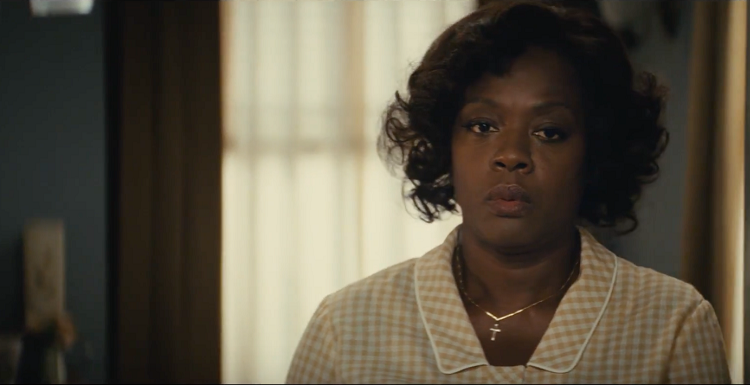
Viola Davis as Rose Maxson in “Fences” by Nell Minow
Do not be misled by the studio marketing department’s decision to call Viola Davis’ performance in “Fences” a supporting role to improve her chances for an Oscar. Her character, Rose, is the true heart of the story. While it is her husband, Troy (played by Denzel Washington, who also directed) who has the most to say, and whose struggle with fate and morality take up much of the screen time, it is Rose who shows us what is really happening. Rose, unlike Troy, can change and learn and forgive, and shows us what it takes to survive.
It is a performance of extraordinarily demanding range. When Troy boasts about telling her when they met that he was not the marrying kind, she laughs affectionately and indulgently. But she makes it clear that it was she who laid down the law at that meeting: marriage or get out of the way. Later, she responds to a devastating betrayal: first numbness, disbelief, and then primal, explosive fury. Finally, we see her strength. Her resolve is not grounded in compromise or concession. Her soul has expanded to encompass all of life’s contradictions.
Davis and Washington won Tony Awards for these roles in the 2010 Broadway revival of “Fences.” Certainly the experience of performing every night gave them a level of trust and understanding that lend depth to their onscreen portrayals. But Davis confided to Tom Hanks in an interview taped for Variety that it was not until after she had performed the role on stage for its entire run that she began to understand how to play the final scenes in the film. That vital engagement with the material and incandescent artistic integrity is what makes this performance one of the best of the year.

Ralph Fiennes as Harry Hawkes in “A Bigger Splash” by Susan Wloszczyna
A carnal force awakens in Ralph Fiennes when he is required to be a certain kind of masculine archetype, usually of the villainous though complex variety. Here, he excels at being an agitator, an instigator, a lusty and loquacious bushy-bearded satyr whose insatiable if dangerous desires will not be denied, no matter the cost to others. His unexpected arrival not too long into this sweat-inducing idyll on a picaresque Italian isle—which disrupts the sex-filled yet tranquil sabbatical being shared by Marianne, a vocally ravaged rock star under medical orders to be silent (Tilda Swinton), and Paul, her recovering alcoholic lover (Matthias Schoenaerts)—is akin to observing a slowly detonating yet bewitching-to-behold grenade.
We hear Harry’s incessant nattering on a phone and at a baggage claim long before he is seen, but we know him already. Paul sums it up when he says, “Jesus, does he ever stop?” This record producer, who is Marianne’s still-besotted ex, is the type who calls the shots and acts upon his every impulse with no sign of shame or embarrassment. Bring along his kittenish newly found daughter (Dakota Johnson), whose main attribute seems to be lolling about in flesh-revealing attire? Why not? Strip off his own clothes like a snake shedding his skin and showily perform a cannonball leap into a pool? Of course. Try to seduce his former paramour while tempting her current beau with his Lolita-ish spawn? A must. He is a boor of the highest order. But what a very long and predictable adventure this would be without its splashiest guest. Add to that one of the year’s best musical interludes in a film, a three-minute or so display of pelvic-centric prancing as Fiennes gyrates to the hypnotic rhythms of the Rolling Stones’ “Emotional Rescue,” and it’s hard not to be wild about his Harry.

Anya Taylor-Joy as Thomasin in “The Witch” by Matt Fagerholm
[Warning – Spoilers Ahead]. One of the reasons we love going to the movies is to see an unknown talent become a star before our very eyes. That happens to newcomer Anya Taylor-Joy in the final moments of Robert Eggers’ masterful debut feature, “The Witch.” Her character of Thomasin, a teenager whose budding sexuality unnerves her Puritan family, could’ve easily been portrayed as a victim done in by forces behind her comprehension. Yet Taylor-Joy exudes the sort of inherent strength that makes her naturally unfit for a repressive lifestyle, thus intensifying her frustration at the hypocrisy she observes in her parents. Rather than weep during a climactic scene of violence, the actress allows exhaustion and relief to be entangled with her horror. Then comes her confrontation with an unseen apparition that asks whether she wants to “live deliciously.” The word “yes” erupts from her mouth with quiet urgency as the camera remains fixed on her face. When she’s ordered to remove her clothes, tears finally form in Thomasin’s eyes, conveying a sense of violation as well as the sudden acknowledgment that she is casting off her past identity forever. When we next see her in close-up, her face has become reduced to a zombified state, with the dead eyes of a soul hopelessly lost. But once she experiences her newfound powers, Thomasin is consumed with exhilaration, liberated from the garments that confined her body and the guilt-laden beliefs that kept her feet planted on solid ground. No wonder witches have a penchant for cackling.

Isabelle Huppert as Nathalie Chazeaux in “Things to Come” by Seongyong Cho
Although she has seldom looked different on the screen, Isabelle Huppert has kept surprising us as effortlessly embodying a wide range of various characters. While she can be very funny, as shown in “8 Women,” she can be quite fearless, as shown in “The Piano Teacher,” and she also can be a saving grace in disappointing films like “I Heart Huckabees.”
In “Things to Come,” Huppert gives another interesting performance as a middle-aged high school teacher who happens to go through a number of unexpected changes coming into her cozy middle-class life. Mostly looking edgy and frigid as usual with her singular presence, she is alternately funny and poignant as conveying the gradual changes inside her character, and that aspect is exemplified well by one brief scene in the movie. Her character apparently feels sad and devastated during that scene, but then she cannot help but be amused by what she has just noticed, and I could not help but admire how Huppert deftly handles her character’s amusingly sudden emotional shift without any misstep.
As the movie eventually arrives at its calm but powerful ending, Huppert does not signify much, yet the plain but graceful final moment of her performance speaks volumes even while shown from the distance, and that is more than enough for us to reflect on how much her character’s life is changed in the end. With her magnificent achievements in “Things to Come” and “Elle,” Huppert confirms to us again in this year that she is definitely one of the most interesting performers of our time, who is still as prolific as ever.

John Goodman as Howard in “10 Cloverfield Lane” by Michael Snydel
John Goodman is one of those actors who is so repeatedly great that even a role as a side character on the fringe lends credibility to the whole production. As such, it’s fascinating to think about Goodman’s brief role in “Hail, Caesar!” and his stunning performance in “10 Cloverfield Lane,” which is basically a chamber thriller for the first third. As Howard, he’s an end-of-days soothsayer of the kind that we so often forget—the seemingly normal guy. He’s a person who strangers would refer to as a polite man, totally unaware that his pleasant demeanor hides a volcanic rage and bitterness about the arc of civilization. And Goodman plays the role with a frightening ease, calmly rationalizing every one of his actions as logical and pragmatic, even as those around him are holding their breath for when he removes his mask.

Sandra Hüller as Ines Conradi in “Toni Erdmann” by Patrick McGavin
The superb German actress Sandra Hüller entered my consciousness a decade ago at the Berlin Film festival, when I caught her demanding, unflinching work in Hans-Christian Schmid’s “Requiem.” That was her first significant part, and she demonstrated technique with a striking, direct emotional engagement to the material.
When I finally saw her again, two years ago at Cannes, in Jessica Hausner’s “Amour Fou,” she was older and even more versatile. In Maren Ade’s extraordinary third feature, “Toni Erdmann,” she gives one of the greatest performances in recent cinema playing Ines Conradi, a tightly-wound management consultant working in Bucharest. Her tense, exacting life is further thrown adrift by the sudden appearance of her father (the equally great Peter Simonischek), a music teacher who’s grown concerned the demands of her work have crushed her soul.
Hüller appears in almost every scene of this 162-minute film. She does phenomenal things with her body, moving from tight and withholding to suddenly exuberant, as she negotiates the complex emotional attitudes about her father—tinged with embarrassment, anger and surprise though also marked by a profound and deep love. Hüller has two knockout scenes that push the movie into the sublime, moments that are beautiful, tender, messy and uncharted—her deeply felt cover performance of Whitney Houston’s “The Greatest Love of All,” and a sustained, strange and remarkable nude scene that is fearless and hypnotic.
Her work is never mannered. Ines is the kind of driven careerist who is constantly in flight. The big movements are freewheeling and magnetic. She registers just as forcefully in the subtlety and grace of her playing, alert to mood and feeling, a force of nature you cannot take your eyes off.

Lily Gladstone as The Rancher in “Certain Women” by Christy Lemire
Acting with a capital “A” tends to be the standard this time of year, especially when it comes to supporting roles. And sure, watching an actor give a showy, scenery-chewing performance does have its pleasures—and its awards-season allure. What Lily Gladstone does in “Certain Women,” though, has an understated power all its own.
Gladstone anchors the third and final segment of writer/director Kelly Reichardt’s drama about women living loosely connected lives in small-town Montana. Her character, known only as The Rancher in the credits, goes about her daily, solitary routine of caring for her horses, her trusty dog constantly running alongside her. It’s a quiet, peaceful existence for a seemingly quiet, peaceful woman.
But an unexpected friendship with a young lawyer (Kristen Stewart), who comes to town once a week to teach a class, suddenly shakes things up for her. In keeping with the low-key, intimate nature of Reichardt’s film, this “shaking up” manifests itself in the smallest and simplest of gestures and glances. Still, Gladstone is so good and she manages to convey so much with so little—the slightest smile, a change in body language—it’s clear that this new connection has transformed her. It’s as if she has a secret, and we can’t wait to find out what it is.
Being still on camera is hard. Doing very little can be more challenging for actors than performing a dramatic monologue or engaging in a heated exchange. The loneliness that defines Gladstone’s character and drives her choices is achingly evident. So is her eventual heartbreak, which Reichardt wisely captures in one, continuous take as The Rancher makes the long drive home in her pickup truck—alone again. She’s the least known among the film’s stars—Stewart, Laura Dern and Reichardt’s muse, Michelle Williams—but she’s by far the most memorable.
